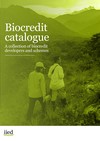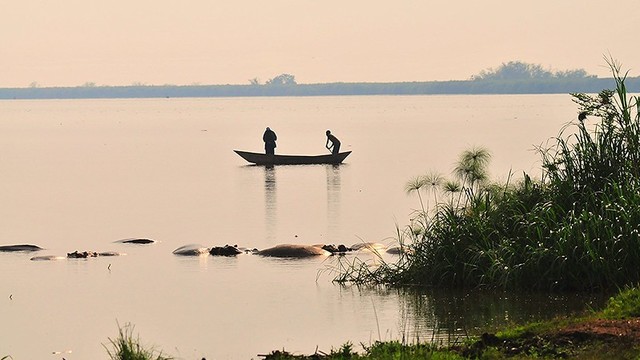Biocredits for nature conservation and poverty reduction
IIED is developing and disseminating knowledge and supporting country implementation for biodiversity credits (biocredits), a novel approach to finance biodiversity conservation that mobilises resources to people living and working closest to biodiversity.

A biocredits scheme could play a role in mitigating biodiversity loss (Photo: Cinzia Cimmino, IIED)
The world is facing large-scale ecological breakdown and biodiversity loss. Biodiversity credits – or biocredits – are a new market innovation that would work similarly to carbon credits, as a measurable and traceable unit of biodiversity that can be traded and sold for investment in biodiversity conservation and poverty reduction.
The biocredits can be supplied by conservation organisations, landowners or environmental NGOs (among others) that monitor and manage biodiversity. Biodiversity improvements can be measured in a number of ways, one of which is to compare to a reference site (such as a protected park with the same ecosystem and/or species) to ensure that biodiversity levels are improving due to management efforts.
These credits are then bought and sold in a market transaction, and the funds earned are returned to those managing biodiversity.
By doing so, biocredit schemes provide means to validate positive biodiversity conservation or management impacts and mobilise finance for biodiversity. When designed thoughtfully, biocredit schemes can deliver benefits to poor people living and working in biodiversity hotspots.
Biocredits are different from biodiversity offsets, which have been criticised for displacing damage in one place and not fully restoring it another area. Even with clear rules and regulations around biodiversity offsetting, there have been complications with offsetting schemes due to a lack of transparency and a mismatch between theory and practice.
This has resulted in concerns that offsets are resulting in a net biodiversity loss. Therefore, biocredit schemes must be designed in a way that leads to an increase in biodiversity levels.
A biocredit must have a specified time period and measured starting state, which can be used to assess net changes. It is useful for the credit to be able to be aggregated as well as be comparable over space and time.
Where possible, the design of a biocredit scheme should be compatible with technology being used to measure biodiversity and monitor sales of biocredits to reduce administrative costs and increase efficiency.
What is IIED doing?
IIED is working to develop a project for two biocredit pilot schemes.
This is part of work to review biocredit projects and methodologies that are currently operating and emerging to summarise the successes and opportunities.
In March 2020, IIED identified four key components of a biocredit trading scheme that were key for it to be successfully implemented.
- Simple, transparent cost-effective design: the units and metrics must be clear, transparent, replicable and coherent, with evolving frameworks such as environmental accounting or the list of endangered species. The unit needs to link to a particular geographic location which is suitable for monitoring.
- Government policy that enables implementation: governments have a role to enable policy to regulate and facilitate the market according to clear and simple rules, in an efficient transparent way that promotes meaningful conservation efforts and poverty reduction.
The government can a) set up rules for monitoring and reporting, registration and trading of biocredits b) grant legitimacy to the biodiversity management actions through recognised management plans, and c) support and encourage participation from voluntary initiatives in ways that avoid double counting or leakage.
- Market engagement to attract buyers and generate sales: this requires identifying potential buyers as well as setting the price of a biocredit appropriately.
- Inclusive and fair benefits for ‘local people’: when transitioning from 'business-as-usual' approaches towards sustainability, it is important to ensure equal benefits to ensure that efforts are maintained and feasible over time. Important social aspects of biocredit schemes include tenure, poverty reduction and free, prior and informed consent.
On 5 July 2022, IIED is hosting a webinar to explore the role of biocredits in mitigating biodiversity loss.
The webinar will feature leading researchers and practitioners discussing how biocredit schemes can be implemented and used to provide finance to those living in vulnerable biodiversity hotspots.
News and updates
Publications
Additional resources
Blog: Funding conservation and tackling poverty, by Nick Breeze (March 2020)
Press release: Radical new way to protect nature’s biodiversity provides incentives and helps tackle poverty (March 2020)








